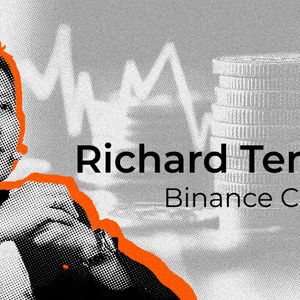Summary BTCI provides an investment opportunity to own Bitcoin, generate high, tax-efficient monthly income, and capture potential price appreciation. BTCI has delivered strong performance since its launch in November 2024, with a 38% total return. Capturing roughly 50% of Bitcoin’s price appreciation while paying a 28% distribution yield. BTCI faces key risks including Bitcoin’s inherent price volatility, regulatory uncertainty, and technological vulnerabilities, with the potential for large price swings in the underlying asset. I plan to use BTCI in my portfolio as an income investment, with a 3-10% allocation to gain conservative exposure to Bitcoin and help offset my fixed expenses. My History With Bitcoin Bitcoin has been an exceptionally difficult investment to ignore over the last 10 years. Love it, hate it, don't understand it, investments don't care how you feel about them. Bitcoin has outperformed the S&P 500 100 times over since May 2016 alone, delivering a 22,000% return vs. a 238% return respectively. I think it's here to stay a while. Data by YCharts I first heard of Bitcoin around 2014 on the Joe Rogan Experience podcast, while mowing my parents' lawn, from the unofficial liaison and Entrepreneur Andreas Antonopoulos. Andreas appeared on the podcast a few times and urged listeners to learn about Bitcoin and to buy Bitcoin. I did neither and, instead, bought cannabis stocks and lost 80% of my money. I assumed Bitcoin was just the next "hot" thing to put your money into. I didn't see the value then and, quite frankly, still speculate on its value and applications today. That being said, I hold no Bitcoin. It's not entirely because I don't believe in it or understand it, but more so because the investment would only serve as a trade in my portfolio, rather than a long-term buy and hold to generate income, as Bitcoin does not produce cash flow. My goal for years has been buying assets that produce cash flow to offset my fixed expenses. Honestly, I'd be amazed with myself had I bought any amount of Bitcoin and not sold when it was trading in the $16,000-$20,000 range, let alone the $100,000 range. I'm not a trader and I really want to emphasize upfront to readers on this article in particular: I am not an expert on Bitcoin either. There are far better resources and articles to learn exclusively about Bitcoin. Thesis I would love to see the Bitcoin network be applied in a business, industry, or product at scale, but I have yet to see its network be leveraged. I do not like how it's becoming less centralized with ETFs and Governments owning large shares of it, and I do not like how easy it is to create a cryptocurrency. I do recognize that Bitcoin is mined, which means energy and labor was required to produce it, like Gold. However, owning Bitcoin to me is like owning a small section of a network like roads, electrical grid, or a sewer system. Owning a part of these networks has value, but how do I as an owner extract my value without selling my shares? While all that's being figured out, the NEOS Bitcoin High Income ETF ( BTCI ) may serve as a way for investors on the fence like me to gain exposure to the incredibly volatile asset Bitcoin and generate income while doing so: exactly what I've been looking for! BTCI Strategy The objective of BTCI is to generate high, tax-efficient monthly income using CBTX index call options, while also capturing a portion of the potential price appreciation by holding Bitcoin itself in the ETF. I encourage readers not familiar with the mechanics of the NEOS funds to read my articles on NEOS S&P 500((R)) High Income ETF ( SPYI ), NEOS NASDAQ-100((R)) High Income ETF ( QQQI ), or NEOS Russell 2000 High Income ETF ( IWMI ) which go into detail about how these funds are managed and operated. BTCI operates the same as these ETFs fundamentally. Launched in October 2024 with over $75M AUM, BTCI has produced a total return of 38% vs. Bitcoin's 48% return. Of note, about 26.5% of BTCI's 38% total return is from the price return of the fund. I'm interpreting that as so far, the ETF is capturing about 50% of Bitcoin's price appreciation, with the options premium adding more return on top while hedging the position. BTCI is currently paying a 28.17% distribution yield based on the most recent distribution of $1.5718/share at around $63/share or so. Data by YCharts Normally, when I see a yield this high I write the investment off pretty quickly, but we need to understand what's driving such a high yield, which is the underlying volatility level of Bitcoin itself. BTCI is made up of Bitcoin via the VanEck Bitcoin ETF ( HODL ), layered covered call options, a put option, and short-term treasuries/cash holdings which fund the buy-writes and payout distributions to shareholders. We can see what calls fund management sold for February expiry looking at the holdings: the 2280, 2510, and 2700 call options. The 2280 is in the money, the 2510 is near the money, and the 2700 is fairly out of the money, but could certainly hit by 02/21. The beauty of this strategy is it hedges volatility risk. Even if Bitcoin drops substantially, we get to keep the underlying asset and use the option premium to dollar cost average down. If it rises quickly, we still capture a portion of the upside and if it trades flat, we pocket all the premium and buy more Bitcoin. In all cases, we rinse and repeat. Cboe Bitcoin U.S. ETF Index (cboe) BTCI Holdings (Seeking Alpha) The reason BTCI pays such a high distribution is because Bitcoin itself is one of the most volatile assets: 30x or more than the USD and 5x more than the S&P 500. Bitcoin is on-par with tech stocks these days at 35.5%, which is actually significantly less than its average over the last 10 years of 46% . Bitcoin's Volatility August 2024 (Forbes) One of the key differentiators with the NEOS funds is the way they create tax-efficient income for investors. BTCI uses the same layers of tax efficiency utilized by SPYI, QQQI, and IWMI: The CBTX index option contracts are taxed at 60%/40% long/short-term capital gains tax rates respectively per Section 1256 contracts . Part of the fund earns qualified dividends from the equities held. Utilization of Tax-loss harvesting. Uses Return of Capital (ROC) classification on the distributions, which makes > 90% of the distributions deferred long-term capital gains. For those unfamiliar or spooked by the return of capital classification, I encourage you to check out this page from NEOS Investments explaining ROC. Thus far, distributions made by BTCI have been classified as a return of capital, rolling up all the option premiums, dividends, capital gains, interest payments, and tax-loss harvesting, into a single tax-efficient distribution. As of the most recent distribution by the Fund, 96% was estimated to be return of capital based on the 19a-1 notices. Bitcoin Risk Bitcoin faces risks related to market volatility, regulatory uncertainty, and technological vulnerabilities . Its price is highly speculative and lacks fundamental valuation metrics. There are certainly a lot of influencers and bankers such as Michael Saylor, causing huge whale-like waves as of late too. Bitcoin is a decentralized currency however its price will be more and more influenced by centralized, traditional holding mediums like ETFs which Government or corporate actions can influence in a potentially negative fashion. This could reduce liquidity and depress prices. An interesting technological risk I don't see mentioned often is the potential an individual, group, or government could acquire 51% of the network, which could seriously jeopardize the coin's stability. I'd also say generally we have yet to see its blockchain network execute on delivering faster, more secure transactions than how we currently bank. A more immediate risk on my mind is simply that this fund is new, launched around the time Bitcoin had a big run-up. We have been in a rising and stable coin environment with BTCI and haven't seen a large drop yet in the underlying asset. We've seen Bitcoin have significant drops in the past, which will also drop the NAV of BTCI. Therefore, a word of caution to investors is to only invest what you can stomach seeing a price swing of 50% at a time, at any time. Use BTCI as an income investment first, not something to trade up and down. Data by YCharts Alternative Bitcoin Option Income ETFs There is one fund, YieldMax Bitcoin Option Income Strategy ETF ( YBIT ) in a similar space as BTCI, but uses a different options management strategy. One of my Seeking Alpha colleagues, Kevin Shan, wrote a good head-to-head comparison going into detail on YBIT , so I won't belabor about it much in this article. In summary, YBIT uses a synthetic covered call strategy and less tax-efficient ETF options, which are taxed at ordinary income tax rates. Most importantly, YBIT is slightly older than BTCI, but has underperformed BTCI and up until November 2024, was actually producing a negative total return. For me, it's a hard pass compared to BTCI's overall management and performance. Data by YCharts Data by YCharts How I Plan to Use BTCI In My Portfolio There is a case for Bitcoin being part of portfolios like Gold is as a non-correlated inflation hedge. Many large public and private companies, like Tesla and SpaceX respectively, hold thousands of Bitcoin on their corporate balance sheets as well. If Bitcoin can help me reach my goals and mimic modern portfolio structure, why not? BTCI is a good application of using options to capitalize on volatility of an underlying asset. For me, I think a 3-10% allocation in BTCI is the right balance. With the 28% yield, even a $5000 allocation would produce about $116/month to help offset our $2500 of fixed expenses: subscriptions, car tabs, cellphone, water, internet, energy, insurances, CapEx, fuel, property taxes, and grocery bills. That's my $50 water and $60 internet bill right there, with enough left over to buy a coffee or two.



















